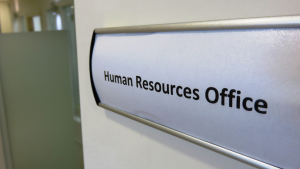As companies grow, they inevitably find themselves with more complex logistics challenges. Their warehouses, distribution centers, and third-party vendors all work smarter, not harder, and that’s one important way that they stay competitive.
What Is Smart Logistics Management?
Smart logistics management is an approach that builds on existing processes and technology to create a more streamlined approach. When a company implements this technique, it sees increased efficiency, improved cost control, and a lower carbon footprint.
The logistics industry is the backbone of all companies-it ensures their operations are efficient, reliable, profitable, and passed on to customers. While many businesses are familiar with the logistical services of steamship lines and post offices, there are countless more logistics-related businesses, including delivery services, transport providers, warehouse systems, and shippers. These businesses provide a valuable service to the global economy, but they need proper management to thrive.
Companies must track data, plan effectively, and automate their processes to manage logistics efficiently. But what does this mean in practice?
Here are six tips for smart logistics management.
Track and manage your fleet
As the name suggests, fleet management is all about keeping track of what you’re shipping, who’s shipping it, and how fast it’s moving. This should include tracking each shipment from the moment it leaves your hands until it reaches its destination while ensuring that they are handled with care. It should also include tracking the performance of the people and vehicles involved in the shipping process. It can be carried out through a tracking system like GPS Tracker For Fleets by Garage 77 GPS or other companies to get access to the current location of vehicles, information on vehicle drivers, route monitoring, and stops alert along the way. Fleet tracking and management solutions can help businesses to maximize efficiency, enhance safety, streamline logistic operations, and improve customer services.
Be sure all of the logistics management software is up-to-date across the board
Logistics software helps managers keep track of a multitude of details about a specific shipment or group of shipments, including the cost of each shipment, its expected delivery date, and the costs that individual shipments incur. However, logistics managers should also consider automating other aspects of their business operations. This includes streamlining warehouse management processes to enhance efficiency and accuracy. Implementing advanced inventory management systems, like Datapel, can significantly improve inventory tracking, reduce errors, and optimize stock levels. Moreover, automation can extend to employee management, simplifying tasks such as shift scheduling and performance tracking.
Clearly define and document expectations
Setting logistics expectations before and during a project is crucial. When a project’s logistics are clearly defined and documented, it makes it easier to manage the project, identify potential issues or problems, and ensure that all parties have a clear understanding of the project’s scope. However, it isn’t always easy. For starters, it’s challenging to set expectations when there are different levels of seniority, power, and tenure among team members. Secondly, it’s challenging to set expectations because expectations are often based on assumptions, knowledge gaps, and personal experiences.
Create specific logistics management goals and benchmarks
As businesses grow, they must develop logistics management goals and benchmarks. Setting these goals is crucial in helping a company become more efficient. Utilizing logistics management best practices and goals will contribute to creating a customer-focused organization. Furthermore, by establishing these goals, the company can analyze performance and formulate a new strategy to tackle any challenges they might be facing. For example, if gaps and inefficiencies are identified in their transportation, they could explore options such as white label fleet management partnerships to streamline operations and enhance overall efficiency. These partnerships tend to provide access to advanced technologies and expertise without the need for substantial in-house development. Essentially, goal setting can serve as a compass guiding the company toward continuous improvement and success. It not only fosters a culture of efficiency but can also enables the organization to adapt to changing market demands.
Make sure your logistics management strategy aligns with your overall business strategy
With the rise of e-commerce, retail and logistics managers face a simple truth: the supply chain is impacting more aspects of a business than ever before. To stay competitive, companies need to rethink their supply chain strategies, which means integrating logistics management into the overall business strategy.
Make sure your team understands the logistics management strategy and how their individual roles fit into the strategy
There is no size-fits-all for strategy when it comes to logistics management, so keep that in mind when crafting your logistics strategy. Begin by clearly defining your strategy, and then lay out the roles and responsibilities of your team. Next, bring your team together to discuss and understand the logistics management strategy, and make sure each person understands their role in the strategy.
Smart logistics management is about managing the flow of goods, people, and information. It’s a way for businesses to lower their overhead costs, improve their relationship with their consumers, and cut costs. Smart logistics management is about making your business more profitable and about keeping up with changing technologies and consumer needs.



